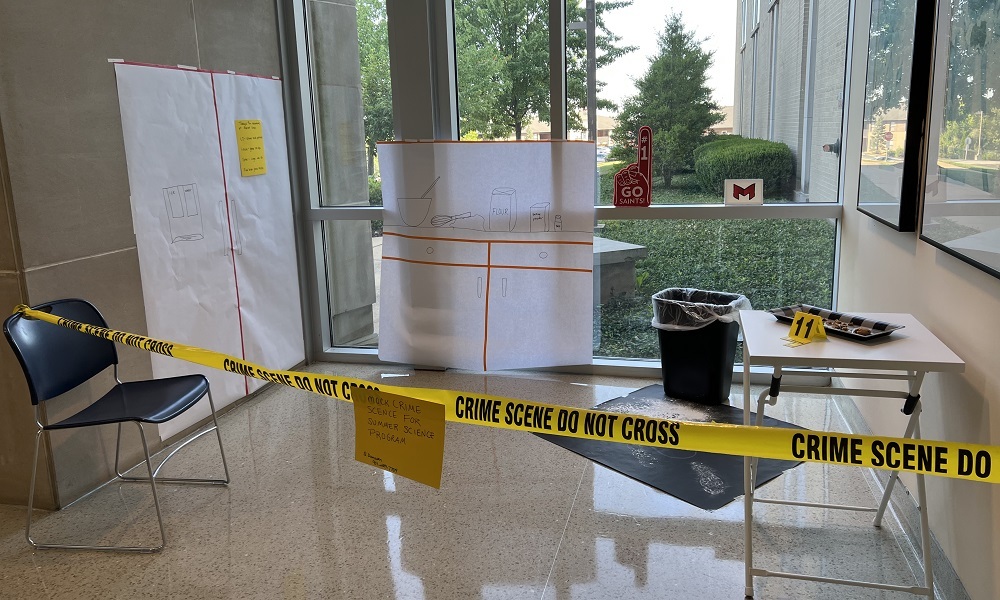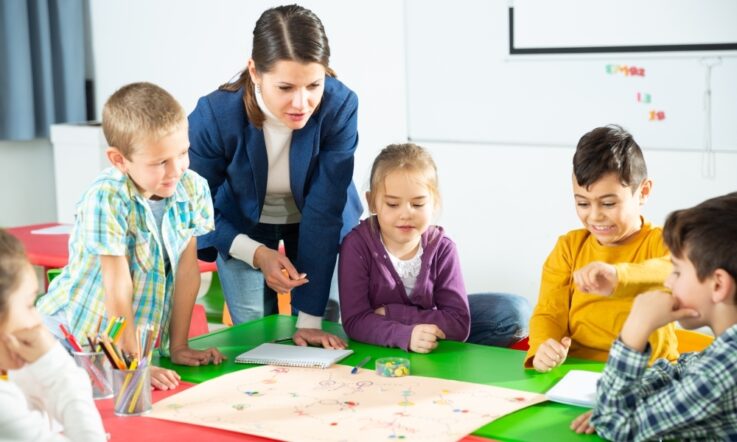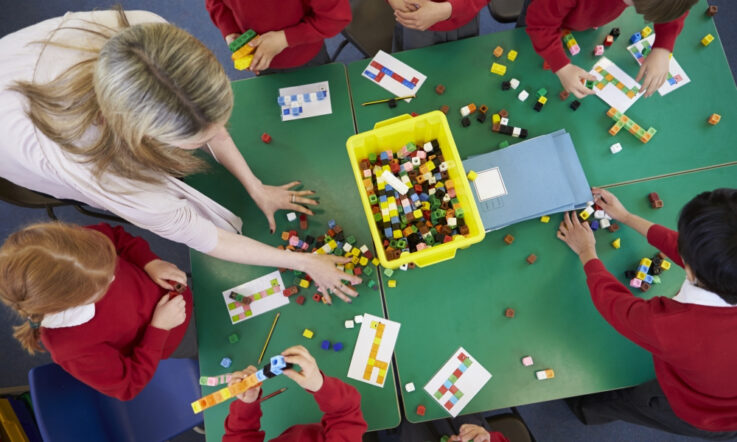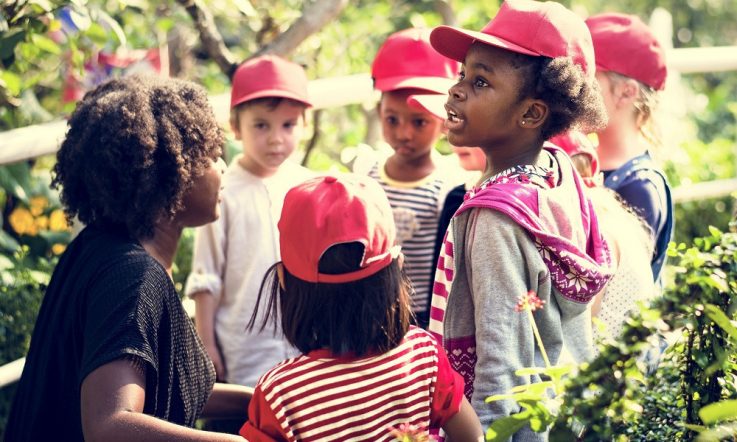Senior Research Fellow at the Australian Council for Educational Research (ACER), Rachel Parker, recently returned from St Louis in the United States where she observed playful STEM classes run at Maryville University’s Summer Science and Robotics Program. The program invites students aged 4-16 to enrol in one-week courses run by university staff during the school summer holidays.
There, Parker witnessed a program run by Associate Professor of Biology and Forensic Science at Maryville University, Dr Stacy Donovan, called ‘I spy a forensic scientist’. Across one week, children learned numerous crime scene investigation (CSI) skills such as identifying and distinguishing types of evidence and using these skills to solve a range of age-appropriate ‘crimes’ that increased in complexity. The course culminated in a showcase of learning on the final day. In this article, Parker shares why this program exemplifies quality learning in play.
When I walked into Stacy’s class, there was a buzz. A few 6 or 7-year-olds in lab coats glanced in my direction, but only briefly; my arrival was the least interesting thing to happen in this laboratory. On the whiteboard was the date and plan (‘Today’s case, CSI daily challenges, prepare for showcase’) and children were busy working in pairs to identify shoeprints. The treads had been dipped in powder and printed on paper and some were lined up with evidence markers. On the board was written ‘Class of evidence: same – all Nike, all laces; different – different colours, sizes and wear pattern.’ On another table I noted a completed ‘spot the difference’ worksheet. When I returned later, children were working in groups to emulate the process of DNA extraction using a soap and strawberry solution.
The perennial question in play-based learning research is what does good practice look like (and how do you know)? These questions are especially pertinent in formal learning environments such as schools, where play and learning are often separated by their different assigned names, spaces, and times such as the classroom and the playground (class and recess).
In July this year I was fortunate to witness quality in action when I visited Maryville University’s Summer Science and Robotics Program in St Louis as a guest researcher. While my daughter joined classes, I observed some incredibly playful STEM classes including survival architecture, augmented and virtual reality, 3D printing, makerspace inventions, stop motion animation, and colour code robotics. Maryville University’s Dr Steve Coxon recently wrote about how this program is making education fun again.
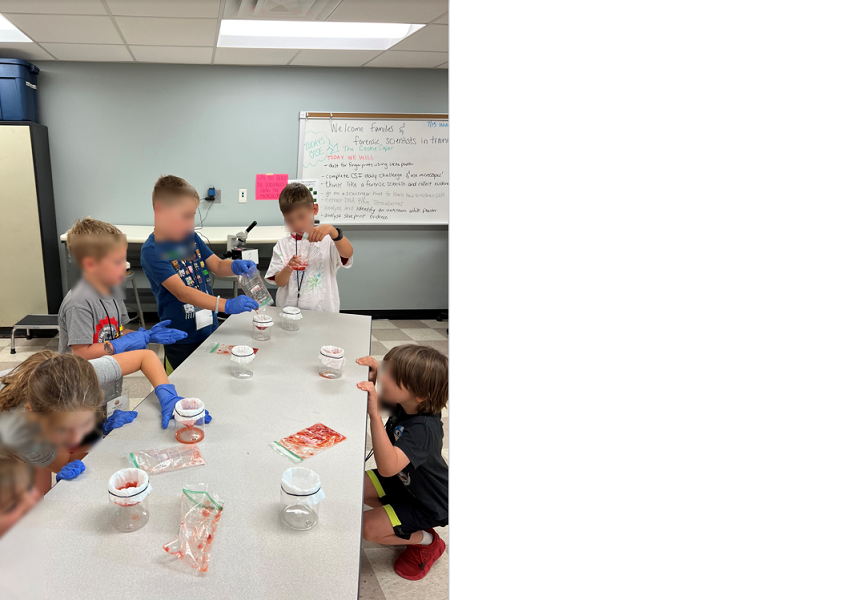
One class was a notable illustration of everything we know about quality in play-based learning. Designed and delivered by Dr Stacy Donovan, an Associate Professor of Biology and Forensic Science at Maryville University, ‘I spy a forensic scientist’ is a class for 6 and 7-year-olds to solve puzzles about crimes just like real scientists.
Students are engaged in hands-on Science activities to solve mysteries, look for and collect evidence and bring the evidence back to the lab for testing. Children not only looked like forensic scientists, but acted and thought like them too, using their very tools to explore fingerprints, and trace evidence and impressions.
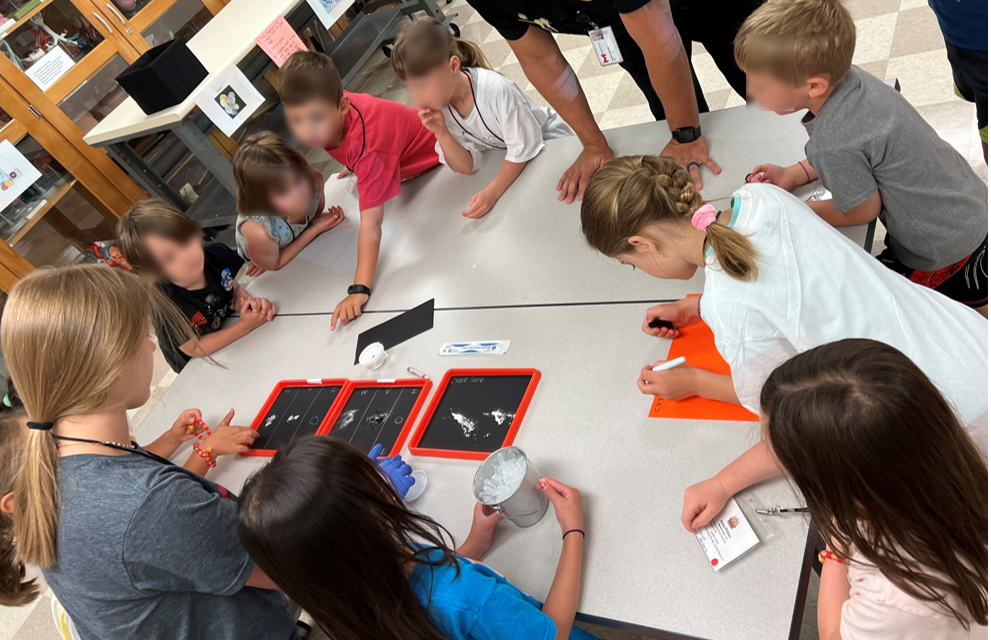
For the past 4 years ACER has been working with the LEGO Foundation on research about quality learning through play. We know that children experience playful learning as meaningful, socially interactive, iterative, actively engaging and joyful. Further, we know that learning through play is not just for literacy and numeracy; it also creates opportunities for social, emotional, physical and creative skills development. Finally, we know that effective play-based learning facilitators make purposeful decisions about when to guide, when to instruct, and when to allow children to explore and discover for themselves.
In Dr Donovan’s classroom this research came to life. Activities were meaningful in that they were linked to each other across the course, culminating in a capstone activity that both showcased and assessed all the skills learned through the week. Activities were connected with children’s existing knowledge about crime scene investigations, including the real-world artefacts from the industry (crime scene tape, evidence markers, and fingerprint powder).
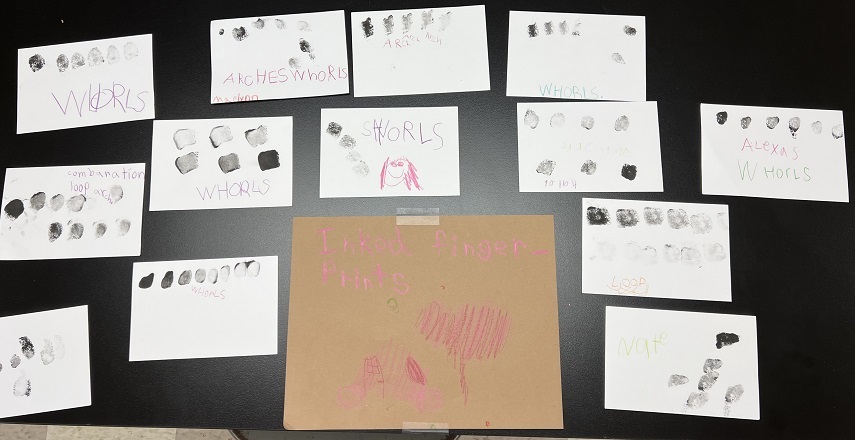
There was joy and active engagement; children were focused and talk was about the task and each other’s work. It was clear to me some deep thinking had gone into not only how to make the topic interesting and enjoyable for children, but how they might learn some real-world skills in the process. I asked Dr Donovan some questions about her design and delivery process:
We know that good experiential/play-based learning programs consider how children experience learning activities. How did you factor how children might experience ‘I spy a forensic scientist’ in the design of the course?
- Make it fun! Incorporate games into learning, such as a scavenger hunt for supplies or resources. Activities like this helped to burn off some energy and enabled us to then focus on a step in a procedure. I also had ‘mystery eggs’. These plastic-coloured eggs had common items inside (coins, magnets, paper clips, cotton ball, noodles, feathers, erasers, beans, bouncy ball, or rice) to teach children to use their senses to make inferences about what was inside. I brought a few out the first day and hid more on subsequent days. The eggs were taped closed, but students could shake them to figure out what was in the egg. Because my students were young (ages 6-7), I had words and images of the items scattered about the room.
- Keep it simple! Too much structure limits play and creativity, particularly when the structure prevents children from taking the time to explore and tinker with the resources or try out the new skill they had learned.
- Give children choices about their learning. As an example, students could make fingerprints with different materials – ink, cocoa powder, yarn/playdough (they had to recreate the print pattern in the playdough with yarn), or even use animal footprint stamps and playdough. Some materials helped scaffold children’s understanding of the idea. For example, after they learned the fingerprint technique on one day, I would add magnifying glasses the next day so they could explore the print in detail up close.
- Try to make connections to familiar objects, so children can tap into their prior experience of these things, for example, using strawberries for DNA extraction and using common household items in the ‘mystery eggs’. For the final crime, all of the suspects were mascots of local sports teams and universities and known to the children.
- Connect learning with real world applications. We invited Public Safety Officers into the class to assist with our mock crime scene, evidence collection, and processing. My Teaching Assistant is a third-year Forensic Science major and I asked her to complete demonstrations of equipment and tools used in the crime lab, such as AccuTrans epoxy used to obtain impression evidence and fingerprint dusting powder. Students examined trace evidence using compound microscopes. They used dissecting microscopes to examine 3D objects including fingerprints. Students also examined models of teeth from sharks and humans.
How did you make decisions about the resources to use (the students themselves, yourself, and all play materials including things from outside)?
I factored in safety, cost, and availability. Resources were personalised and useful – students decorated a white t-shirt that served as their lab coat for the week. I tried to use everyday household/grocery store items that were easy to obtain and familiar to students.
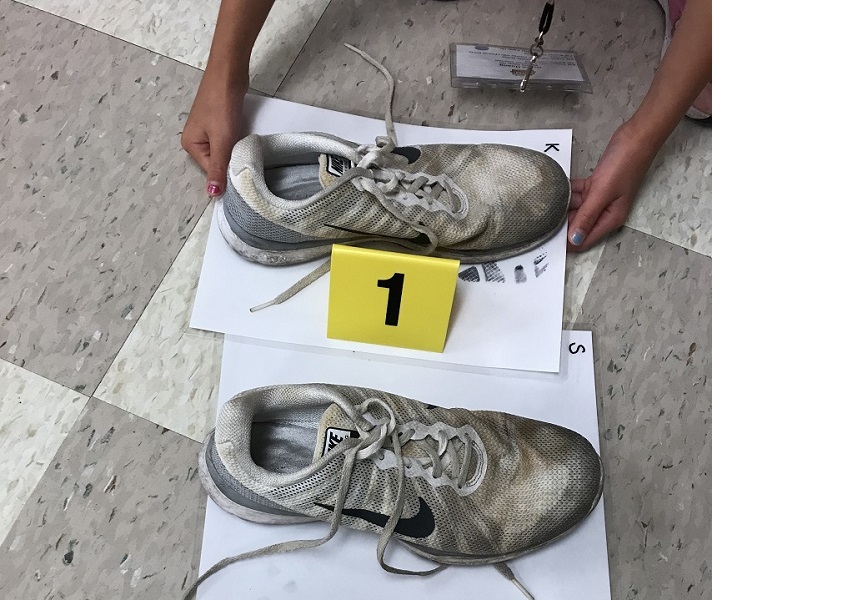
How do you decide when to step in, when to let children discover for themselves, and when to help them?
I carefully observed and listened. I would step in if I sensed they were confused or not engaged. I love asking them questions and having them share what they discovered or learned.
What did you want children to be able to know and do at the end of the course, and how did you build this into the design?
I wanted them to apply what they learned throughout the week about forensic science and to think critically. Throughout the week (Monday to Wednesday) they analysed different kinds of evidence to help ‘solve’ the crime of which mascot ate the cookies. On Thursday, they created their own mystery to solve. As a class, they decided the theme and what kind of evidence they wanted guests to process and analyse.
On Friday, we held our showcase of learning: ‘The case of the missing microscope’. When parents and guests arrived, they received a clue folder and room map. Set up around the room were 6 different activities with clues to solve: (1) identifying tool marks, (2) find the matching fingerprint, (3) find the matching shoe print, (4) match the bite-mark to the evidence, (5) identify the trace materials placed under the microscope, (6) identify the unknown powder.
Additionally, guests could ink their own print, dust for cocoa powder prints, extract DNA from strawberries or try to figure out what was in the mystery eggs. Upon departure, the students’ clue folder was checked for answers and they received a small goodie bag filled with empty eggs (so they could make their own mystery eggs), playdough for creating fingerprints and impressions, some stickers, and a maze puzzle.
We have observed that when children engage in pretend play, they completely embody the role they are play acting, for example, the mother, child, doctor, or shopkeeper, and use the language, mannerisms and proxy tools of their character. ‘I spy a forensic scientist’ was a natural yet sophisticated extension of this process. Dr Donovan’s students also fully embodied their roles, yet the course design and facilitation afforded them a deeper learning experience than play acting; they were able to think, act, talk and use the real-world tools and solve crimes just like a forensic scientist – in a way that was authentic, age-appropriate and meaningful. The learning was not over simplified or constrained; Dr Donovan had high expectations for what children could achieve, and awareness of what support they might need to achieve these expectations.
Thank you to Dr Stacy Donovan for her contribution to this article.
For more information about ACER’s research with the LEGO Foundation, contact Rachel Parker: Rachel.parker@acer.org
For more information about Maryville University’s Summer Science and Robotics Program, contact Professor Steve Coxon: scoxon@maryville.edu
